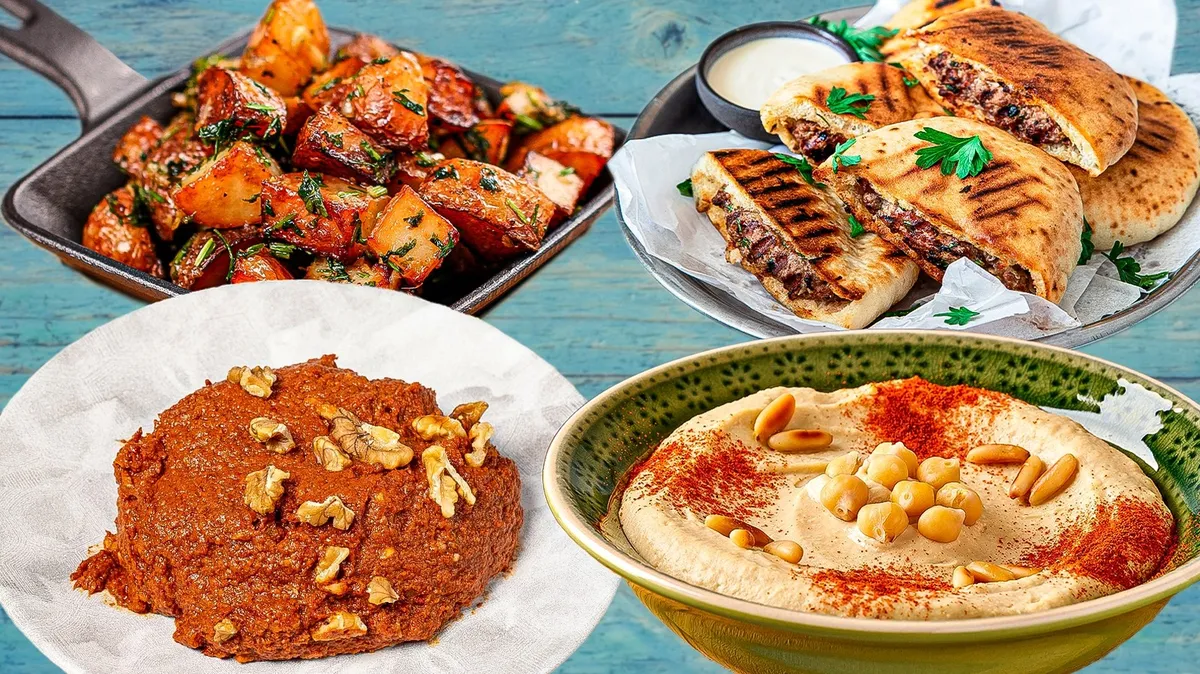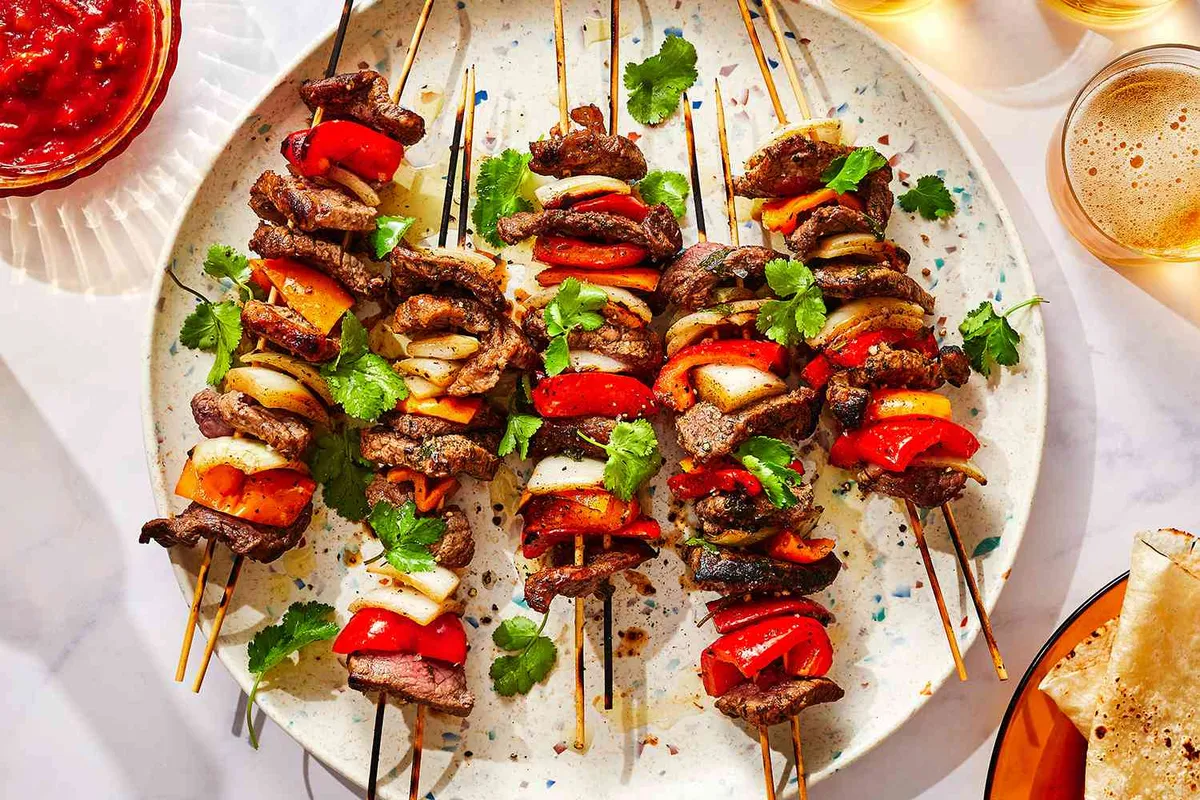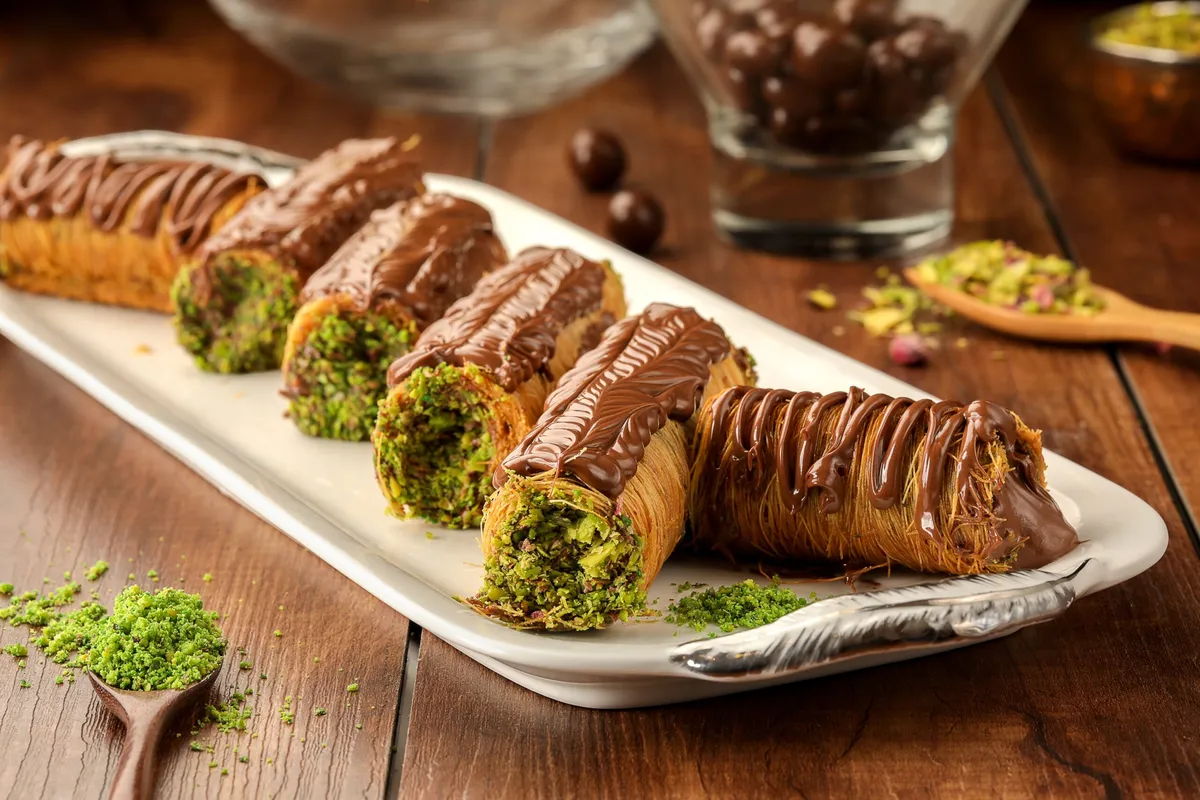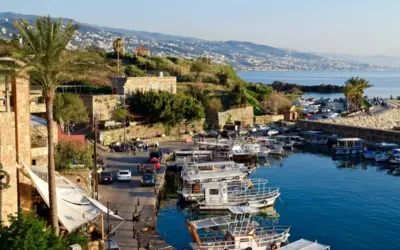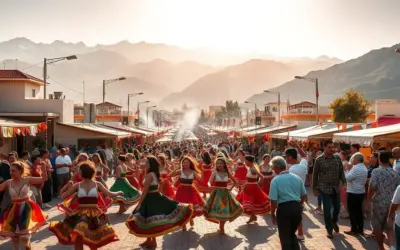Lebanon food is more than just a meal—it’s a sensory symphony that begins before you take your first bite. Picture the sizzle of kafta skewers hitting hot coals in a Beirut alley, the intoxicating aroma of thyme and sesame from a corner bakery pulling fresh manakish from a brick oven, and the dazzling sight of a table groaning under the weight of a colorful mezze spread shared among laughing family and friends.
This cuisine serves as an edible storybook, chronicling millennia of history, a deep-rooted culture of hospitality, and a society that places community at the very center of the table. Recently ranked as the best in the Arab region by Taste Atlas, Lebanese cuisine has captured hearts worldwide with its fresh ingredients, bold flavors, and the profound belief that food is meant to be shared.
More than a meal: the art and soul of the Lebanese mezze
To truly understand Lebanon food, you must start with mezze. This is not simply an appetizer course; it is the central pillar of the nation’s dining culture and a powerful embodiment of hospitality, generosity, and the profound importance of communal experience. The mezze tradition involves dozens of small, shareable plates that are designed to prolong the dining experience, fostering conversation, connection, and a collective spirit. This format is the very engine of social interaction at the table.
The small plates force diners to reach, share, and engage, making an individualistic meal impossible and reinforcing the cultural value of the group over the individual. This social contract is so ingrained that etiquette dictates a host must offer food multiple times, and a guest, after polite initial refusals, must accept. It is a beautiful ritual of giving and receiving that the mezze table perfectly facilitates. As one local wisely noted, “When it comes to Lebanese food, I wouldn’t recommend a specific dish as much as I would recommend an entire table of food.”
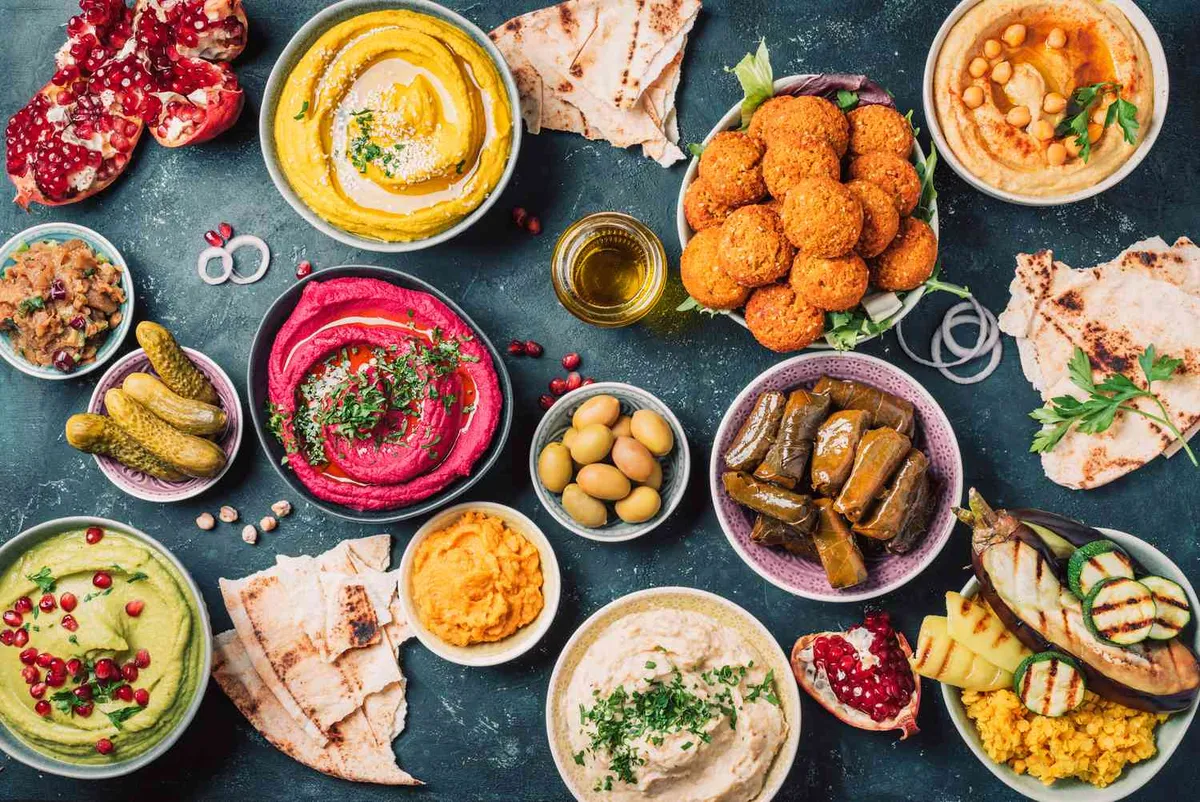
The cold mezze: a fresh vibrant welcome
The mezze experience typically begins with an array of cold dishes that are fresh, vibrant, and designed to awaken the palate. These dishes are not complex but showcase the Lebanese mastery of transforming simple, high-quality ingredients into something truly extraordinary. They set the stage for the richer, warmer dishes to come, providing bright, acidic, and herbaceous counterpoints.
Hummus
Hummus stands as the undisputed cornerstone of any mezze. It is a creamy, rich dip made from chickpeas, tahini (sesame paste), fresh lemon juice, and garlic. While ubiquitous, its quality can vary immensely.
Variations include Hummus Beiruti, which adds more garlic, parsley, and sometimes chili, and versions topped with sautéed ground meat or toasted pine nuts. One traveler captured the transformative nature of authentic Lebanon food perfectly: “It was incredible how different the quality in hummus between American Lebanese restaurants and in Lebanon. Now when I go to a Lebanese restaurant in New York City… I am completely disappointed.” This sentiment underscores the sublime potential of this simple dish.
Tabbouleh
Tabbouleh corrects a common misconception held outside the Levant. This is emphatically a parsley salad, not a bulgur wheat salad. Finely chopped parsley is the star, supported by diced tomatoes, mint, onion, and only a small amount of fine bulgur wheat. It is all dressed simply with olive oil and lemon juice. Originating in the mountains between Lebanon and Syria, it delivers a refreshingly bright and herbaceous counterpoint to the richer dips on the table.
Fattoush
Fattoush, often called a “bread salad,” represents Lebanese ingenuity at its finest—a brilliant and delicious use of leftover or stale pita bread. The bread is toasted or fried until crispy and tossed with mixed greens like lettuce, cucumber, tomatoes, and radish.
Its signature flavor comes from the dressing, a tangy combination of olive oil, lemon juice, and two essential Middle Eastern ingredients: sumac, a deep red spice with a tart lemony profile, and pomegranate molasses, which adds a complex sweet-and-sour depth.
Baba Ghanoush (Moutabal)
This dish delivers smoky, silky eggplant heaven. The characteristic flavor comes from roasting or grilling whole eggplants directly over an open flame until the skin is charred and the flesh is tender. The cooked eggplant is then peeled and mashed with tahini, garlic, and lemon juice.
While the names are often used interchangeably, some regions differentiate Moutabal as the version made with tahini, while Baba Ghanoush may refer to a variation with more vegetables and without tahini.
Warak Enab (Stuffed Grape Leaves)
These are delicate, cigar-shaped parcels that represent a true labor of love. The tender grape leaves are filled with a mixture of rice, finely diced vegetables, and herbs. They come in two primary forms: a vegetarian version known as bi-zeit (with oil), served cold, and a version stuffed with rice and minced meat, bi-lahm (with meat), often served warm.
A passionate local endorsement captures their beloved status perfectly: “Wara2 3enab. This is so good, it needs no support. Just eat it with green onions and enjoy.”
The hot mezze: savory heartwarming bites
Following the cold starters, a procession of hot dishes arrives at the table. These savory items add depth and heartiness to the meal, demonstrating the full range and versatility of Lebanon food traditions, from fried pastries to masterful preparations of meat and vegetables. This course often introduces the richer, spicier flavors of the cuisine.
Kibbeh
Kibbeh holds the title of Lebanon’s national dish. It is a masterful combination of fine bulgur wheat and finely ground lean meat (typically lamb or beef), seasoned with onions and spices. Its true genius lies in its versatility, appearing in numerous forms.
- Kibbeh Nayeh: This is the most audacious form—raw Kibbeh served like a pâté or steak tartare, drizzled with olive oil and eaten with pita bread and fresh mint. Its preparation demands the absolute freshest, highest-quality meat.
- Kibbeh Rass: These are the iconic football-shaped croquettes, where a shell of the bulgur-meat mixture is stuffed with cooked minced meat, onions, and toasted pine nuts, then deep-fried.
- Kibbeh bel Sayniye: A common home-style preparation where the mixture is layered in a tray, often with a cooked meat filling in the middle, scored into diamond shapes, and baked.
Falafel
Falafel has become a global street food superstar. These deep-fried patties made from ground chickpeas (and sometimes fava beans) are a staple throughout the Middle East, but many argue the Lebanese version is unparalleled. One travel writer noted a unique and delightful detail: “The ones in Lebanon are just that extra bit special as they often make it in the shape of a tiny donut. Not only do they look super cute, but this means you get double the crunch when you bite into it.”
Fatayer and Sambousek (Savory Pastries)
No mezze is complete without an assortment of flaky, golden packages. Fatayer are triangular pies most famously filled with a tangy mixture of spinach, onion, sumac, and lemon juice. Sambousek (or Rakakat) are small turnovers, often shaped like half-moons or cigars, filled with minced meat (lahme) or a blend of cheeses (jibneh).
Batata Harra (Spicy Potatoes)
This dish proves that simplicity can be incredibly addictive. Cubes of potato are fried until golden and crispy, then tossed with fresh cilantro, garlic, chili, and a squeeze of lemon juice. It creates a perfect balance of savory, spicy, and fresh flavors that keeps you reaching for more.
Main courses: where Lebanon food truly shines
Beyond the expansive world of mezze, Lebanese main courses showcase the cuisine’s ability to turn humble ingredients into unforgettable meals. These dishes represent the heart of family cooking and special occasion feasts, often centered around expertly grilled meats or slow-cooked stews that form the centerpiece of the meal.
Shawarma
Shawarma might be the most globally recognized Lebanon food export. This marinated meat (traditionally lamb, chicken, or beef) is stacked on a vertical spit and slow-roasted, with the outer layers constantly shaved off as they cook.
The tender, flavorful meat is typically wrapped in pita bread with tahini sauce, pickles, tomatoes, and sometimes fries tucked right inside the wrap. The key to exceptional Shawarma lies in the marinade—a blend of spices including cumin, coriander, paprika, and turmeric.
Kafta
Kafta appears throughout the Levant, but Lebanese preparations stand out for their aromatic spice blends. Ground lamb or beef is mixed with parsley, onions, and spices, then shaped around skewers and grilled (Kafta Meshwi) or baked in a tray with tahini sauce and potato slices (Kafta bil Sayniye). The seasoning typically includes allspice and cinnamon, creating a warm, complex flavor profile.
Shish Taouk
Shish Taouk delivers perfectly marinated grilled chicken skewers that stay tender and juicy. The secret lies in a yogurt-based marinade infused with garlic, lemon juice, and Middle Eastern spices. This preparation not only flavors the meat but also tenderizes it, resulting in chicken that’s succulent and bursting with flavor. It’s often served with garlic sauce (toum), pickles, and flatbread.
According to locals and food critics alike, the strength of these main courses lies in their straightforward preparation that lets quality ingredients shine. When done right, these are the dishes that create lifelong converts to Lebanese cuisine.
Breakfast traditions: starting the day the Lebanese way
Lebanese breakfast culture reveals a different side of the cuisine—one that’s deeply rooted in tradition and perfect for leisurely weekend mornings. This meal showcases Lebanon food in its most comforting, family-oriented form, moving away from grilled meats and toward savory pastries, rich yogurts, and hearty bean dishes.
Manakish
Manakish serves as Lebanon’s answer to pizza and appears on breakfast tables throughout the country. This flatbread is topped with za’atar (a blend of dried thyme, sesame seeds, sumac, and salt) mixed with olive oil, or with jibneh (cheese), or kishk (a fermented mixture of yogurt and bulgur wheat).
Baked in a hot oven until the bread is crispy and the toppings are fragrant, Manakish is often eaten folded like a taco. Street vendors and bakeries produce thousands of these every morning.
Labneh
Labneh transforms simple yogurt into something extraordinary. This thick, creamy strained yogurt has a tangy flavor and spreadable consistency similar to cream cheese. It’s typically served drizzled with olive oil and sprinkled with dried mint, often accompanied by fresh vegetables, olives, and pita bread. Labneh isn’t just for breakfast—it appears throughout the day as part of mezze spreads.
Foul Mudammas
Foul Mudammas provides hearty sustenance with its base of fava beans slowly simmered until tender, then mashed and seasoned with garlic, lemon juice, and cumin. Served warm and drizzled with olive oil, this protein-rich dish has sustained Lebanese families for generations. It’s typically eaten with fresh vegetables and pita bread.
Fatteh
Fatteh represents the more indulgent side of Lebanese breakfast. This layered dish starts with a base of toasted pita pieces, topped with warm chickpeas, garlicky yogurt, and finished with toasted pine nuts and melted butter. The contrast of textures—crunchy bread, creamy yogurt, tender chickpeas—makes every spoonful interesting.
Sweet endings: Lebanese desserts and beverages
No exploration of Lebanon food would be complete without diving into the realm of sweets and drinks. Lebanese desserts are unapologetically rich, often syrup-soaked, and packed with nuts, reflecting the region’s access to quality ingredients and its tradition of celebratory feasting. These are typically enjoyed with strong coffee or a refreshing, traditional drink.
Baklava
Baklava might be claimed by multiple Middle Eastern countries, but the Lebanese version has its own character. Layers of paper-thin phyllo dough are brushed with butter, filled with finely chopped pistachios or walnuts, and baked until golden. The pastry is then drenched in a fragrant sugar syrup infused with rose water or orange blossom water.
Knafeh (or Kenafeh)
This dessert features shredded phyllo dough (kataifi) or semolina dough layered with soft cheese (often Akkawi or Nabulsi), baked until golden, then soaked in sugar syrup and topped with crushed pistachios. It’s best served warm, when the cheese is still melty. One food blogger described first trying authentic Knafeh as “like a warm hug from someone who really loves butter and sugar.”
Maamoul
Maamoul are delicate shortbread cookies traditionally made during religious holidays, particularly Easter and Eid. The cookies are filled with dates, nuts, or figs and pressed into decorative wooden molds before baking. The dough itself is flavored with rose water or orange blossom water. Many Lebanese-American families still make these using molds passed down through generations.
(If you love these, you can explore our guide to other [Middle Eastern pastries and cookies].)
Arabic Coffee (Qahwa Arabiyya)
Arabic Coffee serves as the ceremonial punctuation mark to any Lebanese meal. This thick, strong coffee is prepared in a special pot called a rakweh and flavored with cardamom. It’s served in small demitasse cups without sugar, and the act of serving it represents a final, essential gesture of hospitality.
Arak
Arak holds the title of Lebanon’s national spirit—a potent unsweetened liquor distilled from grapes and flavored with aniseed. It’s traditionally served with the mezze feast. This clear liquid turns a milky, opaque white when mixed with water and ice, a process that also mellows its strong flavor. The late chef Anthony Bourdain once aptly described this anise-flavored liquor as “sexy.”
Jallab
Jallab offers a refreshing non-alcoholic alternative, especially popular during warm summer months. This drink is made from a base of grape molasses and dates, scented with rose water, and served over ice. It’s typically garnished with pine nuts and raisins, adding delightful texture.
Experiencing Lebanese food in the US: a guide for the American foodie
For those in the United States, the vibrant flavors of Lebanon food are closer than you might think, thanks to generations of immigrants who have brought their culinary traditions with them. The key to an authentic experience often lies in seeking out the communities where this heritage is most concentrated, as these areas support restaurants and bakeries that cater to a discerning local clientele.
Why Dearborn, Michigan is the “Arab Capital of North America”
The story of Lebanon food in America is deeply intertwined with the city of Dearborn, Michigan. Large-scale Lebanese immigration to the Detroit metropolitan area began in the late 19th and early 20th centuries, with many drawn by jobs in the burgeoning automotive industry.
Today, Dearborn has the highest concentration of Arab Americans of any city in the United States, and the Lebanese/Syrian community remains one of the largest. This multi-generational concentration has created a unique cultural ecosystem. Unlike isolated restaurants that might adapt flavors to mainstream palates, businesses in Dearborn preserve traditional recipes faithfully. For travelers seeking the most authentic Lebanon food experience in the US, a visit to Dearborn is essential.
Finding authentic Lebanese cuisine near you: top restaurants in key US cities
This curated list, drawn from local food guides and passionate online discussions, highlights popular places to experience authentic Lebanese cuisine across the United States.
- Detroit/Dearborn, MI: As the epicenter, this area has vast options, including numerous restaurants, bakeries, and markets serving the community daily.
- Los Angeles, CA: Boasts a vibrant scene with highly-regarded establishments. Marouch in Hollywood is a long-time favorite for Lebanese-Armenian cuisine. Carousel (Glendale, Hollywood) is a beloved institution known for its extensive mezze.
- New York, NY: Brooklyn’s Bay Ridge neighborhood is home to one of the oldest Lebanese communities in the country, offering a mix of traditional eateries and bakeries.
- New Orleans, LA: Hosts Lebanon’s Cafe, a well-known establishment offering a lavish menu of Middle Eastern dishes.
- Washington, D.C.: Showcases the acclaimed Zaytinya, which features Lebanese dishes alongside Greek and Turkish cuisine with attention to traditional techniques.
The advantage of these established communities is the authenticity and variety they offer. The best spots are often unassuming, family-run operations that deliver food that transports you straight to Beirut.
The traveler’s toolkit: Lebanese dining etiquette
Whether dining in Beirut or at a family-owned restaurant in Dearborn, understanding the cultural etiquette surrounding meals is key to showing respect and fully immersing yourself in the experience of Lebanese hospitality. These customs reflect values that have been passed down through generations.
Accept, don’t refuse
Hospitality is paramount in Lebanese culture. A host will offer food and drink multiple times. It’s considered polite to initially refuse before ultimately accepting. To refuse an offer outright can be seen as an insult. This dance of offering and accepting is a cherished cultural ritual.
Compliment the chef
A great deal of time, effort, and love is poured into preparing Lebanon food. Expressing genuine appreciation is a crucial way to honor your host’s generosity. A simple “Shukran” (thank you) goes a long way.
Punctuality matters
Arriving on time for a dinner invitation is a sign of respect for your host and the effort they’ve put into the occasion. Lebanese meals often take hours, so starting on time ensures you can enjoy the full experience.
Sharing is caring
Since meals are almost always served from communal plates, it’s important to be considerate. Take modest portions at first to ensure there’s enough for everyone to sample each dish. You can always go back for more.
Use your right hand
In more traditional or Muslim settings, it’s customary to eat, pass dishes, and offer food with the right hand. The left hand is traditionally considered unclean and should be avoided for these actions.
To explore Lebanon food is to embark on a journey that transcends the plate. It is an immersion into a world of shared platters, vibrant fresh flavors, a history shaped by a crossroads of civilizations, and a culture of profound, unwavering hospitality.
From the communal joy of a mezze feast to the humble comfort of a home-cooked stew, every dish tells a story of heritage, community, and the belief that a shared meal is one of life’s greatest celebrations. The true challenge isn’t just to eat Lebanese food but to experience it.
